It’s easy to see where shoestring acacia (
Acacia stenophylla) gets its name once you notice its long, skinny leaves. The tree’s attractive weeping growth habit and columnar shape make it a great choice for narrow areas where screening or shade is desired. Its drought tolerance and ability to grow in locations with full sun and reflected heat add to its versatility in the landscape.
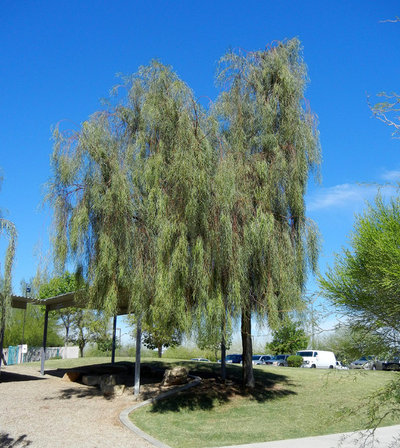
Noelle Johnson Landscape Consulting
Botanical name: Acacia stenophyllaCommon names: Shoestring acacia, dalby myall
Origin: Native to Australia
Where it will grow: Hardy to 15 to 20 degrees Fahrenheit, or minus 9 to minus 7 degrees Celsius (USDA zones 8 to 10; find your zone)
Water requirement: Low once established
Light requirement: Full, even reflected, sun
Mature size: 30 to 40 feet tall and 20 feet wide
Benefits and tolerances: Extremely drought-tolerant once established
Seasonal interest: Small, creamy-yellow puffball flowers in winter
When to plant: Spring or fall
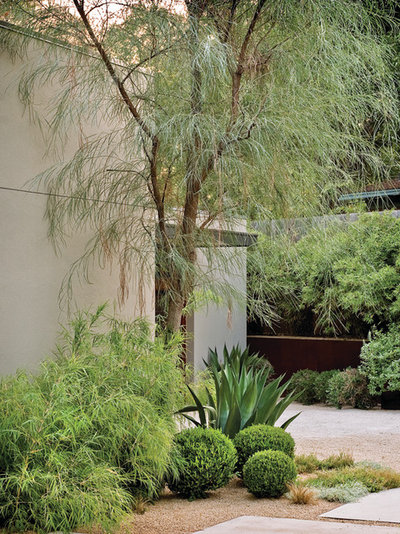
D-CRAIN Design and Construction
Distinguishing traits. Shoestring acacia’s long, narrow leaves are actually phyllodes, which are modified petioles that function as leaves. Each phyllode grows about 12 to 16 inches long on this semideciduous tree. The foliage provides light filtered shade in the landscape, allowing plants underneath to receive some sunlight. Shoestring acacia can look straggly when young, but it grows quickly.
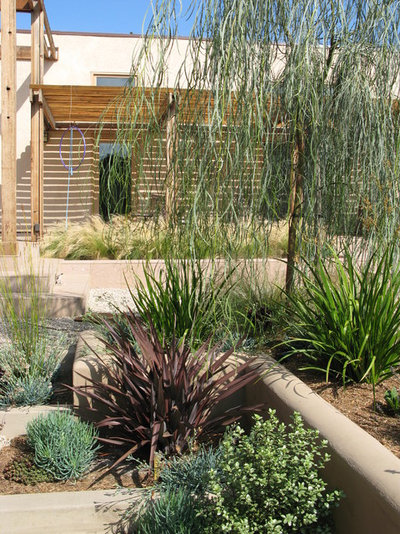
debora carl landscape design
Half-inch-wide, creamy-yellow puffball flowers appear on the tree in winter. They’re followed by 8-inch-long seedpods, which resemble a chain of beans. Shoestring acacia can reseed in areas where the ground stays moist, so this tree is best used where the ground dries out between waterings.
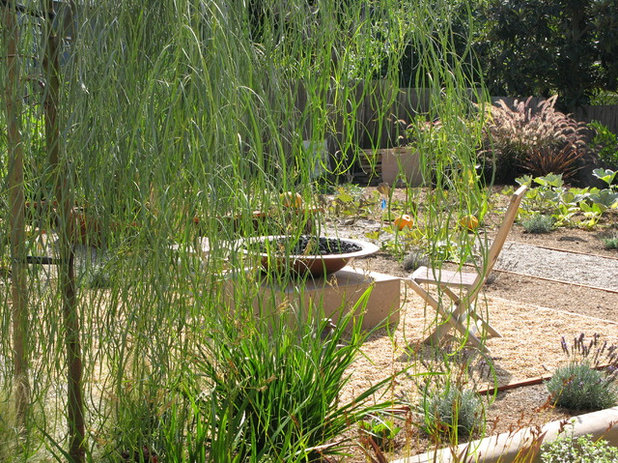
debora carl landscape design
How to use it. Shoestring acacia’s narrow growth habit makes it a popular choice for areas with limited space for outward growth. Plant a row of three or more for screening between buildings. The height of this tree also makes it suitable for screening out an undesirable view.
The wispy foliage of this acacia species allows sunlight to reach plants growing underneath its canopy while providing some protection from the hot sun. Autumn sage (
Salvia greggii), Mexican honeysuckle (
Justicia spicigera), Southwestern mock vervain (
Glandularia gooddingii) and tufted evening primrose (
Oenothera caespitosa) will appreciate the filtered shade.
Use caution if planting the tree next to swimming pools and water features since its seedpods can create unwelcome litter in the water.
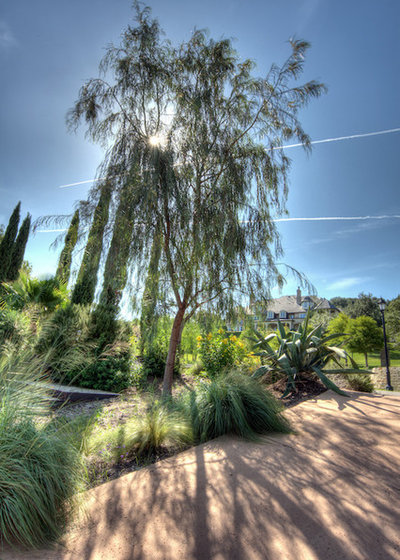
D-CRAIN Design and Construction
Planting notes. Plant shoestring acacia in well-drained soil in full sun. Dig a hole three times as wide as the root ball to help the roots grow outward. The depth of the hole should be the same as the root ball — no deeper. Water deeply once a month spring through fall and alternating months during the winter. No fertilizer is needed, and maintenance consists of pruning low branches to maintain an attractive tree form. Prune in spring after flowers have faded.





